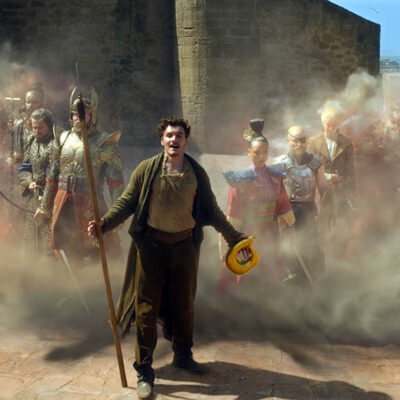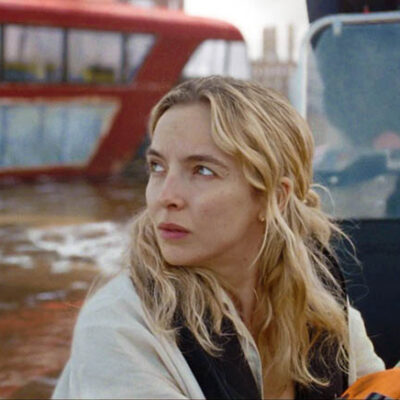Backgrounds were created utilizing the oil painting techniques of 17th century Dutch painters. “The reason why I started doing that is because I like the old Disney films, such as Bambi,” explains Hulsing. “I enjoy that warm artistic look in contrast with modern animation films being made in Hollywood, which are good entertainment but feel sterile because they’re from a computer.
“For Undone,” he continues, “we recruited a whole team of classically trained painters who then had to be trained to paint in the same style.” The lighting schemes were also influenced by famous 17th century Dutch painters. “Often we used dramatic lighting. For instance, a Rembrandt has a strong light source with a lot of dark spots. The other thing is that the series is situated in San Antonio, Texas, where I have never been. However, Kate grew up there and compiled references of places that exist in the city. The art designers used those photos loosely to create a whole world that was more dream-like and beautifully painted.”
Projection mapping allowed the characters to move through the 2D backgrounds as if they were in a 3D space. We didn’t have many moving cameras but we would motion track them,” notes Hulsing. “The space was completely built in 3D and treated the various props as separate elements. For instance, if there was a couch in a room, certain aspects of it would be painted and projected into 3D. That way we could not only make strange special effects where an oil-painted room would suddenly collapse or blow up but still look painted. Also, if there was a location that would come back frequently, like Alma’s house, we could completely projection map it with oil paintings and use different angles in that space as backgrounds and it would still look painted.”
Looking after the cinematography was Nick Ferreiro (Truth or Dare). “If I wanted to communicate to the audience that we’re seeing a vision from Alma I often used a wide lens, like 50mm, to exaggerate the point of view. Normal dialog scenes were filmed with 50mm or 70mm lenses.”
Compositing was instrumental in combining the different elements into a unified aesthetic. “Not only did we have 3D and 2D animation, rotoscoping and oil paintings, but our group of painters each had a slightly different style, so the compositing turned out to be important for color grading as well as merging those various techniques into one believable world,” states Hulsing. “The characters also feel painterly as they consist of the same materials that are in the backgrounds. There were a lot of methods that the compositors used, like adding light effects and contrast, and grading all of the colors.”
The most stressful aspect was the nine-hour time difference between Amsterdam and Los Angeles. “We had Skype and conference calls,” remarks Hulsing. “The only way we could get this done was through the online platform Shotgun. Everyone was connected to Shotgun, which had every single shot, storyboard and design. It meant that the end of every day I would get a playlist with a 100 rotoscoped shots done in Texas that I will have to review, approve or give notes.”

















